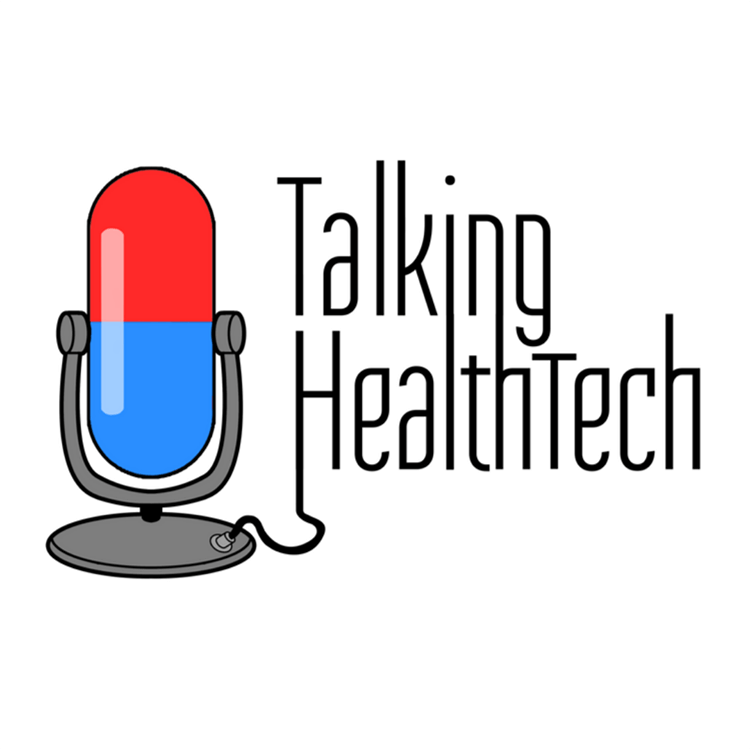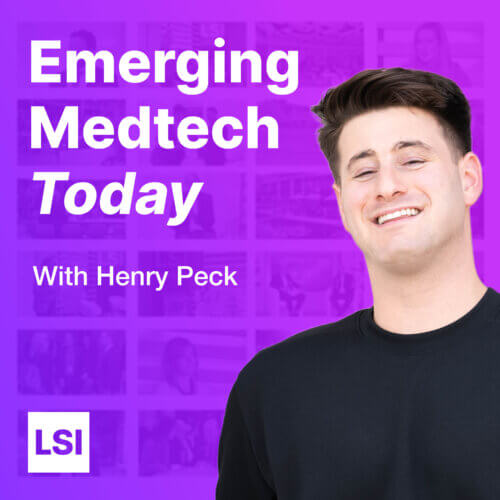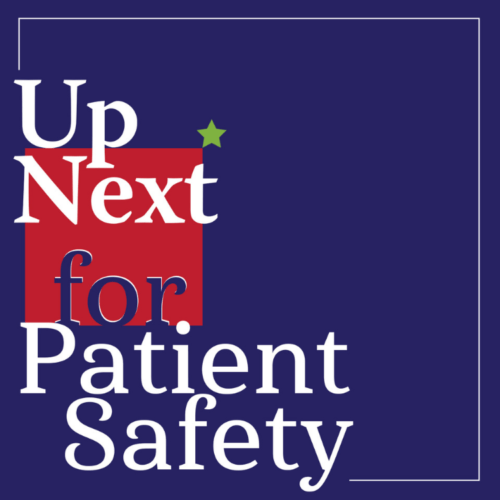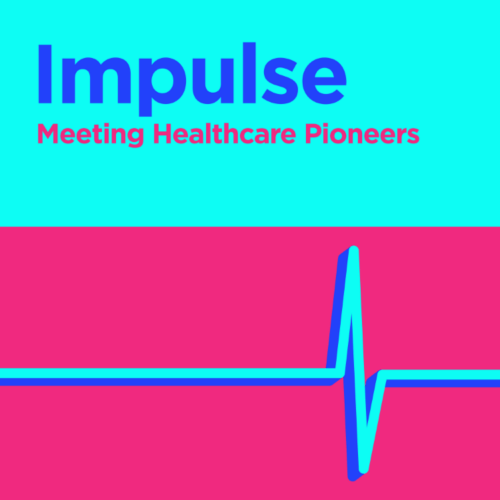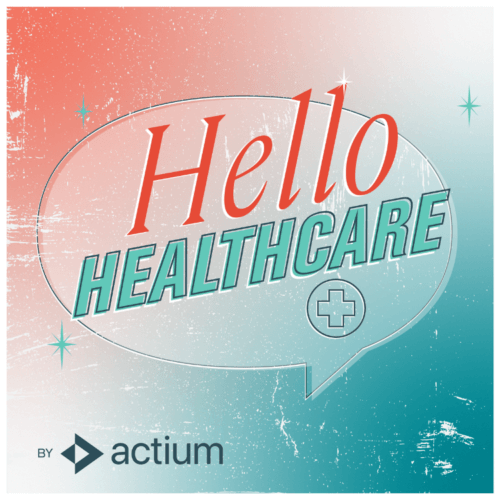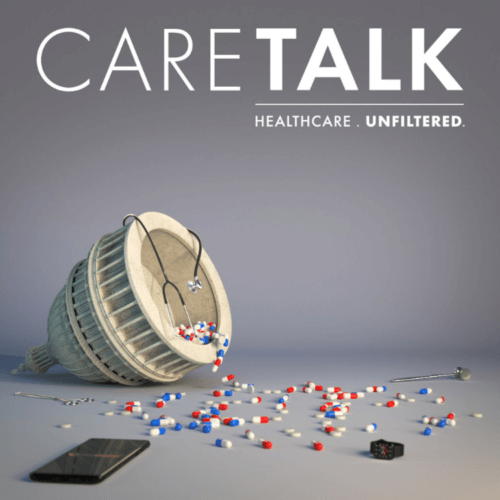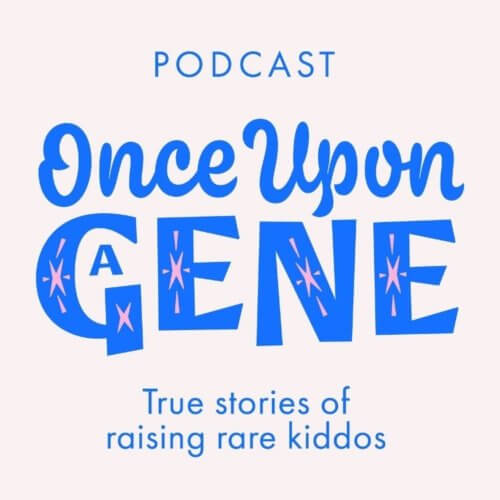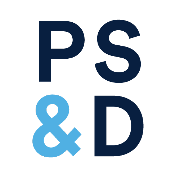23 – Frank & Lorraine Pyefinch, Best Practice Software
Frank & Lorraine Pyefinch of Best Practice Software are two iconic and down to earth players in the Australian Practice Management System game.
Dr Frank Pyefinch is not only founder of Best Practice, but also originally the founder of Medical Director – the number 1 and 2 practice management systems for Australian GPs today, and have been for many years.
As CEO of Best Practice, Frank brings with him a long and proud history working as a busy GP, and Lorraine as a registered nurse – so together they understand first hand the challenges and needs of the medical community when it comes to software and technology.
Overview
[02:07] Genie was first created because Frank doesn’t like Mac
[02:45] The first PMS in Australia (Medical Director) was created by Frank because the poisons act changed in Australia allowing typed scripts, which included computer generated ones.
[06:38] The break-even point for MD back in the early 90s was 200 sites. This seemed an ambitious goal at the time. Today Best Practice Software has over 4500 sites.
[06:49] The name “Medical Director” came from Lorraine looking through Job Classifieds in Aus Doc magazine, and liking the attributes of a ‘Medical Director’.
[07:58] The original Medical Director logo was created by Lorraine with the kids etch-a-sketch in the back of the family car
[08:30] The first copy of Medical Director was sold on it’s launch at the AMA’s annual computer day conference in 1992.
[09:00] In 1994/95 advertisements started to be inserted into the Medical Director software, which subsidised the program heavily.
[09:30] In 1999 Medical Director was sold to Health Communication Network (HCN). Frank and Lorraine went to HCN with the business.
[10:30] Frank and Lorraine left HCN in 2003 as they were dissatisfied with the increasingly intrusive advertising being placed in MD to raise revenue. They sat out their exclusion period in their contract, and during that time Frank went back to being a GP in Bundaberg while writing Best Practice.
[12:00] There were no standards for medical software at that time. If there were, it’s likely the product would never have been built.
[14:00] Frank and Lorraine have seen Medical Software evolve from a text mode dos interface, to a graphical user interface, to the introduction of tables and touch screens. Now seeing a bigger emphasis on communication, and also now a shift to the cloud, which is driving the development of their Titanium product to be released next year.
[15:07] Frank still does some programming in Best Practice even today, because he enjoys it.
[17:34] Some of the government brain waves aren’t clearly thought out, such as the PHN’s collecting data for the QI Pip.
[18:55] The biggest cause of support issues for Best Practice are Medicare claims not reconciling due to the archaic nature of the Medicare adapter. BP is hoping Medicare shift to web services before BP release Titanium so they don’t need to integrate with legacy technology in the cloud.
[21:15] During the roll out of the then PCHR, now My Health Record, during the Royal Review, Frank and Lorraine provided the suggestion that Doctors should be remunerated for uploading summaries to My Health Record as it was additional admin work they were not being paid for.
[26:51] The BP Partner Program has been launched in order to give partners more controlled access to the BP database so they don’t need to hack their way in, and only get access to what they need – protecting the partner, the patient, the practice and BP.
[31:10] Pathology requests in PMS systems is standardised as SNP and QML, two competitors came together in the early 90’s came to the PMS providers and standardised the format of the forms, which set a format for future pathology vendors. This didn’t happen with radiology which is all over the place
[33:30] The ADHA is making strides towards their goal of interoperability, for example with secure messaging, although is Secure Messaging the best way to go about it, perhaps web services for a central repository would be a more modern way to go about it.
[35:30] Titanium has not been released yet due to the sheer amount of work to build 30 years of product development from scratch into the cloud. The business was also distracted by recent acquisitions which expanded their reach into Allied and NZ markets. Ultimately all products will be rolled into Titanium their cloud product.
[40:15] BP are soon releasing their patient app, they see it as a future direction for practices wanting to engage more with patients
[44:50] A big consideration for BP in rolling out the patient app was the potential risk of needing to support millions of patients using the app – shifting from a B2B approach to B2C.
Links
ADHA – Australian Digital Health Agency
Transcript
[00:00:00] Pete: [00:00:00] Welcome to Talking HealthTech. My name is Peter Birch, and this is a podcast of conversations with doctors, developers, and decision makers that are playing in the Australian HealthTech scene today.
[00:00:12] With me today are two very iconic and extremely down to earth players in the Australian Practice Management System game. I’m talking about none other than Frank and Lorraine Pyefinch of Best Practice Software.
[00:00:23] Dr. Frank Pyefinch is not only founder of Best Practice. But he’s also originally the founder of Medical Director, the number one and two Practice Management Systems for Australian GP’s today, and they both have been for many years. Dr. Frank Pyefinch is CEO of Best Practice and he brings with him a long and proud history of working as a busy GP and Lorraine as a registered nurse, so together they understand firsthand the challenges and needs of the medical community when it comes to software and technology. Best Practice has dominated the market for a long time as the first choice for GPs around Australia when it comes to selecting a PMS, and I look forward to [00:01:00] finding out why in my conversation with both of you, Frank and Lorraine how you doing?
[00:01:03] Frank: Hi. Well, good.
[00:01:06]Pete: This is a first for me. I’m actually recording from your office. So had taken it out on the road, which is great. But I, I originally thought I was going to go to Bundaberg, but you’ve got a few offices I see.
[00:01:16] Frank: We moved from Bundaberg about five years ago , and came to Brisbane because our two children had to come down for university and getting them to go back to Bundaberg was quite difficult. So every birthday and Christmas, it was down to Brisbane. After a couple of years, we decided we might as well just move here.
[00:01:35] Lorraine: The main office is still in Bundaberg, so we’ve got about 65 staff working there. We’ve got four offices all up, so we’ve got one here in Brisbane with just over 40 staff and another 9 down in Sydney, and then, over in New Zealand, we’ve got more than 40 in Hamilton, in the North Island.
[00:01:55] Pete: So I always used to say that Bundaberg was the HealthTech capital of Australia, or the Silicon Valley of [00:02:00] Australian HealthTech.
[00:02:00] Frank: It was certainly in the 90s, , when Paul was still living there and wrote Genie
[00:02:07] Lorraine: We have a funny story about Paul because you see, I clearly remember the night Paul came round to our house. After Frank had first started to show off the original Medical Director, and I remember them sitting in the study and I could hear Paul going “Oh wow, that’s really good, Frank”. And then he asked Frank the fatal question “does it run on a Mac?” And Frank said, ” no, I hate Macs”. And so Paul went, “Ya ha!, I’m going to write Medical Director for a Mac!”,
[00:02:34] Pete: [00:02:34] As I sit here, I look sponsored by Mac sitting in front of you. Hey, look, so, there’s a lot that we can cover off. Obvious question. You guys have a lot of history in this space. So where do you start? How did this all start?
[00:02:44] Frank: [00:02:44] It really started in the late 8 0’s , when Lorraine was doing a bachelor of health science at central Queensland uni, and so we had to buy a computer for her to do her course, and I got interested in it. And [00:03:00] started using it for a little database projects at home, like watching the rainfall every day and coding what bottles of wine we had in cupboard and things.
[00:03:11] And around about the same time, in about 1989 the Queensland Government changed the poisons act to allow prescriptions to be typewritten , as opposed to handwritten. And of course, type written also included computer generated. And so I thought this was really neat because I had something like 25 patients in a local nursing home.
[00:03:33] And almost every week I’d get a list of prescription requests for them, and I could sometimes sit for an hour after I’d finished at six o’clock at night writing out prescriptions for the nursing home, and I thought if I could put all these patient’s names into a computer, into a database. And then put the drugs in against the names.
[00:03:55] I’d be able to just go through and tag which ones I wanted to print and print them out. [00:04:00] And so I did that and started using it at work.
[00:04:04] Pete: [00:04:04] When was that? There was back in the 80s?
[00:04:06] Frank: [00:04:06] it was about 89 / 90 when I really started.. And then I started using it day to day with my regular patients as well, because once I’ve written that in, it could write scripts, it didn’t have to be restricted to the nursing home patients. So I bought a computer and put it on my desk with a dot matrix printer. And in those days we had to supply our own prescription paper, which I had to get printed and so I started using it for all my patients. Then one of my partners started using it too, and we actually networked it by putting a cable up through the ceiling and down the other side and into his room.
[00:04:43] And so we had a little network of two computers and progressively it just grew from there. And I started putting other things in. I got a list of PBS medications from the pharmacy next door. The pharmacist had written his own computer program for [00:05:00] point of sale, and so he gave me a big list of all the medications with their PBS listings.
[00:05:05] I was able to use that to create pick-lists of drugs and so on. And once I had that, it was possible to use that data in other ways, so I put things like listing allergies, and then I could cross check between the scripts and the allergies and it just grew. And yeah. Progressively, we added more and more things, and over the early 90’s, through 90 to about 92 it became what was ultimately Medical Director the first release. And how Medical Director really came about, was that a GP in Narrangbar, which is just North of Brisbane, heard about the fact that I was writing computer generated scripts and he was really keen to do the same. So he contacted me and said. Can I have a look at your program?
[00:05:50] So packaged it up onto a three and a half inch floppy disc and posted it down to him and he put it on and played around with it and said, you got back in touch and said, this is amazing. [00:06:00] This is just what I’ve been looking for. There’s nothing else like it anywhere in Australia. And he said, you should be selling it.
[00:06:06] And I thought, hmm, I’m a GP. I’m not a sales person or a computer expert. It was just a hobby really for my own use. But we had a chat about it and decided..
[00:06:21] Lorraine: [00:06:21] I went to TAFE and did a short course on how to write a business plan because I thought we’d better have a business plan. They were very popular back in the 90s so I wrote that business plan. I remember coming home to Frank one night from TAFE and saying very proudly: “so I’ve worked out our break even point, we have to have 200 sites to break even. Okay. And Frank said, Oh, that’s a bit ambitious, isn’t it?
[00:06:43]
[00:06:43] Pete: [00:06:43] How many sites do you have now?
[00:06:45] Frank: [00:06:45] Four and a half thousand
[00:06:49] Lorraine: [00:06:49] Medical Director was interesting because even the name. We came up with the name, I like to say I named the babies in the family, but we came up with the [00:07:00] name because at the time there were a lot of really gimmicky names, you know,
[00:07:04] Frank: [00:07:04] Medi-mouse.
[00:07:06] Lorraine: [00:07:06] I was actually flicking through Aus Doc magazine and got to the classifieds back. And they had all these ads looking for a Medical Director, and I was reading the attributes of what a Medical Director was, and I thought, yeah, that’s actually something, responsible, in charge, reliable, all those sorts of things.
[00:07:32] So I thought, well, that’s the kind of this kind of image we thought, something that helps the practice and to make it more efficient, just even handwriting, because there were a lot of concerns about the medication errors and just being able to have a type written prescription, just removed any ambiguity over what of handwritten script might’ve might have seemed to whoever was dispensing. So that’s sort of where it started. The logo, the MD logo, [00:08:00] I was sitting in the back of the car with the kids etch-a-sketch when we were coming back from holidays. Came up with the MD, the original, they don’t use that one anymore.
[00:08:10] Pete: [00:08:10] They’ve still got the name though.
[00:08:12] Frank: [00:08:12] So we started selling it in 1992. And in fact, we had a table at the AMA’s annual computer day that they used to have back in those days. And, we were in a corner with a table and we had a printer and we were actually printing scripts on fake sample script paper, and we sold the first one on the day.
[00:08:34] At the at the trade display, and that was September 92 and basically it just took off from there and I think 94 we had passed out 200 site limit to, to break even, and I had to take increasingly longer periods of time away from the practice. And so I ended up in about 94 or 95, we teamed up [00:09:00] with some advertising people down in Sydney, and that’s when we started putting the ads into Medical Director, which subsidized the program quite heavily.
[00:09:10] It was never free. People keep telling me that. We used to give it away free, but we never actually did, but it was heavily subsidized by the advertising. And over the period through 95 to 99 we build up to about 1500 sites. I think it was at that time, we sold the business to health communication network and we worked there for four years, but during that time I didn’t do any general practice, and by the end of that time I thought we were starting to lose touch with the coal face, and at the same time we thought the product was being pushed in directions that we didn’t want to see it going. In that it was being used as a cash cow with increasing amounts of advertising and more intrusive advertising
[00:09:54] Lorraine: [00:09:54] When it was our business, Frank used to have pretty tight editorial control over [00:10:00] where and how many ads appeared, and so it was more of an exclusive spot at the pharmaceuticals paid for and we disagreed with, I think, the way that, that seemed to be a lucrative revenue. stream for for the business and we didn’t agree with what
[00:10:17] Pete: [00:10:17] Yeah I mean, you obviously can’t do that at all now.
[00:10:20] Frank: [00:10:20] No, no. It went from being the customers, being the doctors, to the customers, being the drug companys, which was not what we wanted to see. So in 2003 we both left and then had a year to sit out in the exclusion period from my contract. And during that time, I went back to general practice 12 hours a week in Bundaberg. And we decided during that period that there was still room for someone to come in and produce a product targeting doctors that had no advertising in it. And so that was why we started working on BP.
[00:10:56] Lorraine: [00:10:56] And by then, our old product Medical Director was the market [00:11:00] dominate…
[00:11:00] Frank: [00:11:00] It had 85% market share at that time.
[00:11:03] Lorraine: [00:11:03] So it was, it had gone in that space of less than 10 years from probably less than 5% of doctors using computers in their surgery to being the norm for the vast majority. So, I mean, ultimately patient safety, by the fact that, prescriptions will legible had improved remarkably in that time.
[00:11:24] Frank: [00:11:24] And I mean, we’ve added so much allergy checking, interaction, checking disease interaction checking. So there was a lot of patients safety sort of features built into the product. And it actually reached a point where at one point the medical defense people were saying that if you weren’t using a computer for prescribing, then you probably weren’t practicing to the standard that is expected at the time. So if you had a misadventure due to with the handwritten script, you would probably lose the case.
[00:12:00] [00:12:00] Lorraine: [00:12:00] I suppose we look back on it now, there were no standards for software in Australia at that time. They really aren’t now, Frank created the standard, I suppose, he set the bar. If there had been standards in place, it might have actually been more difficult to do what we do. Because the way you look at some of the government mandated work and think, well, we probably wouldn’t have designed it like that.
[00:12:27] Frank: [00:12:27] Well, it was very much designed by a clinician, and that’s why it, I think took off because the workflows were very intuitive and very natural to the clinicians. Once they started using it, it really improved their efficiency, improve the note-taking, improved patient safety. There was all positives.
[00:12:48] Pete: [00:12:48] It sounds very much designed to solve a problem rather than designed to show off some fancy tech.
[00:12:54] Frank: [00:12:54] Yeah. It was very much from a user and that’s when I wasn’t working in general [00:13:00] practice during the HCN period. I started to feel that it was losing some of its relevance because it wasn’t keeping pace with what…
